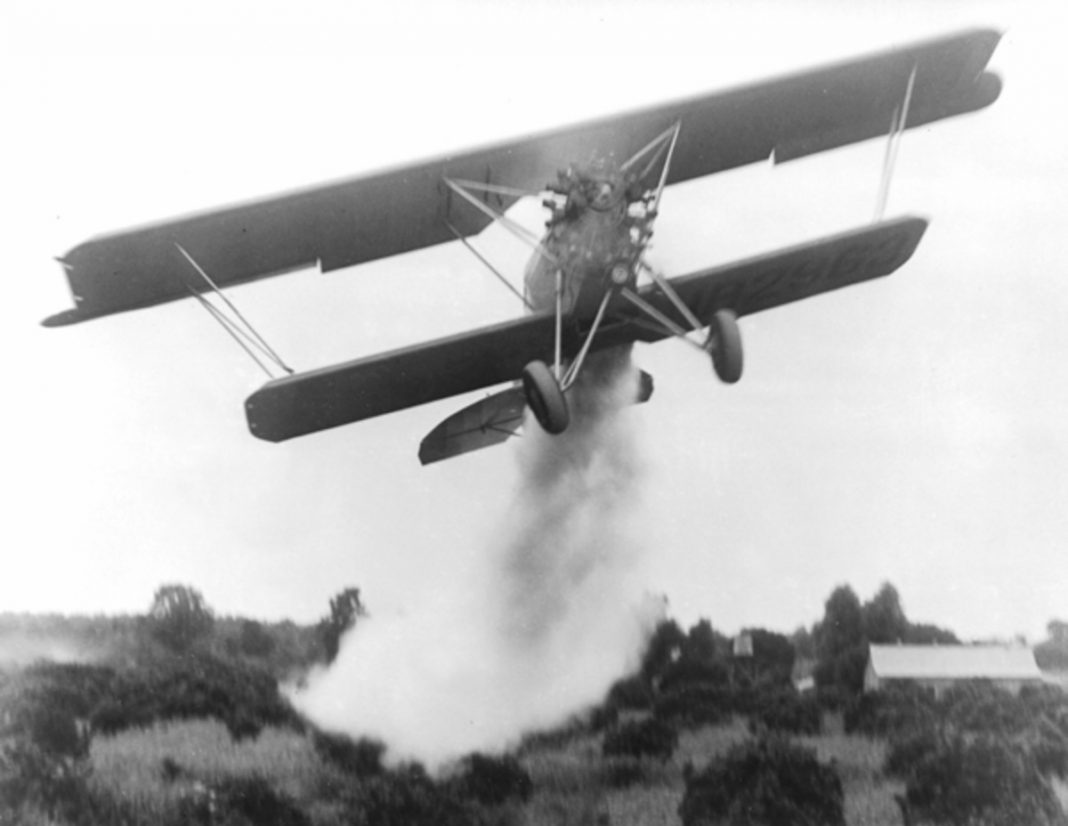Before becoming a powerhouse in commercial aviation, Delta Air Lines began operations as a crop-dusting business. The firm traces its roots back to Huff Daland Dusters, which was incorporated on March 2nd, 1925. To start its services as the first agricultural flying company in the United States, it acquired its first-ever aircraft just over two weeks later. This plane was the Huff Daland Duster.

A new industry
The Delta Flight Museum shares that before operations started, aircraft manufacturer Huff-Daland & Co. built the first plane designed explicitly for crop dusting between 1923 and 1924. The company aligned with entomologist B.R. Coad and his team at the US Department of Agriculture’s Delta Lab, which was in Tallulah, Louisiana.
On July 28th, 1924, the first test flight of the duster occurred. It was piloted by the world-famous Harold Harris, a decorated serviceman in the United States Army Air Forces. The following month, the first public aerial dusting demonstration happened in Athens, Georgia. Then, in September of that year. The plane dusted 1,800 acres at 35 cents per acre in Heathman, Mississippi.
The teams tested several models and engines, and two versions came about in the end. One was smaller while the other one was larger. However, by 1928, only the smaller model was in use. This variant was called the Huff-Daland Duster (Petrel 31). It was an updated version of the Petrel Model 5 biplane. Notably, it was affectionally given the nickname of Puffer.

Helping the economy
Primarily, the duster was built to protect the cotton fields across the southern states of the country against the boll weevil. This creature was a notorious pest during this period. Huff-Daland Dusters worked alongside other companies, the government, and the military in an attempt to counter the financial threat across the nation as a result of the insect’s activities.
March 25th, 1925 was a milestone in Delta’s history as Huff Daland Dusters commenced commercial operations dusting Georgia’s famous peach trees. The cleaning of these trees in Montezuma was the first-ever dusting of fruit orchards by airplane for insect control.
Subsequently, the company operated the largest privately-owned fleet across the globe. The firm’s 18 dusters helped it become an international outfit early on in its life. During the winter months of 1927 and 1928, the aircraft worked on fields in Perú.
Even after Delta was formed and passenger services were introduced, it still conducted crop-dusting operations over the decades. Notably, during the onset of the Great Depression, the airline suspended operations and focused on agricultural work.

A valued member of the team
In 1944, Delta pioneer C.E Woolman received a letter from aircraft designer Loyd Stearman. The sender enquires about the features of a successful crop-duster. Woolman replied by stating that the most plane in its dusting fleet is the Puffer. He highlighted how it used to be produced by the Huff Daland Airplane Company, but his airline continued to build the type for its own use. Altogether, he emphasized that it was hard to match this aircraft when it comes to its benefits.
“Generally speaking, a dusting plane should have a quick takeoff and a slow landing speed, good visibility (and I would emphasize this point), and should be very maneuverable. It should be ruggedly built, especially the landing gear which should be equipped with balloon or semi-balloon tires. It should have good load carrying capacity both from the standpoint of weight and cubic capacity which should be locate as near the center of gravity as possible,” Woolman said, as per the Delta Flight Museum.
“The opening of the dustbin should be sufficiently large and so located as to facilitate fast loading. The power plant should be ample for cruising at 80 or 90 m.p.h. with ample reserve for steep climbs in order to clear obstacles at the ends of the fields, which are sometimes well over 100 ft. Gas capacity should be sufficient for four or five hours with the tanks located in the upper wings. Exhaust stacks should not exhaust over the top wing nor under the ship as sparks might ignite the inflammable dust.”
A helping hand
Altogether, if it weren’t for this beginning as a humble crop-dusting company, Delta wouldn’t go on to become the force that it is today. Undoubtedly, these Huff Daland Dusters were crucial in helping the airline progress rapidly during its early years.
What are your thoughts about the Huff Daland Duster? What do you make of Delta Air Lines’ early years? Let us know what you think of these operations in the comment section.



